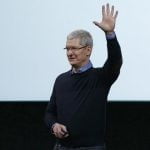
AT&T Inc. set a price of $35 a month for a new online-streaming TV service with 100 channels or more, and the company may experiment with “a la carte” programming, giving customers choice on what channels they pay to watch.
AT&T, which is buying Time Warner for $85.4 billion (roughly Rs. 5,27,026 crores), plans to unveil DirecTV Now next month as a response to online-only TV competitors like Netflix and Amazon.com, which have been luring its customers away with lower-priced alternatives. With regulators set to review the merger, AT&T is attempting to show that the deal would benefit consumers in price and choice while offering a new competitor to cable-TV providers.
“Our intent is to bring Time Warner and AT&T together” to create a “new and different competitor,” AT&T Chief Executive Officer Randall Stephenson said at a Wall Street Journal conference Tuesday in Laguna Beach, California.
DirecTV Now will be priced to compete with two leading online TV providers – Sony’s PlayStation Vue and Dish Network Corp.’s Sling TV. PlayStation Vue starts at $39.99 for 60 channels and runs as high as $54.99 for more than 100 channels. Sling TV begins at $20 for 28 channels and goes as high as $40 for a 48-channel multi-screen package.The competition for cable-like online services is suddenly fierce. YouTube has been working for months on the paid live-TV streaming service, called Unplugged. Hulu LLC, which is co-owned by Fox, Disney, Comcast Corp. and Time Warner, will introduce its own service in the coming months, and Amazon.com and Apple have explored the idea.
AT&T, the largest US pay-TV provider, has been working for three years to build a video-delivery system that can carry multiple live feeds to broadband-connected homes. The “over-the-top” internet delivery eliminates the need for a cable hookup or satellite dish. AT&T plans to make the technology its primary platform in five years or less, people familiar with the situation have said.
The company has reached programming agreements with 90 percent of its content partners for DirecTV Now, including Time Warner, Viacom Inc. and Scripps Networks Interactive.
AT&T’s plunge into media with the Time Warner deal is in part to relieve pressure facing its maturing wireless business and customer erosion in video. The Dallas-based company acquired satellite-TV operator DirecTV for $48.5 billion last year, and so far in 2016 it’s lost more than 106,000 TV customers.
Deal scrutiny
Time Warner shares are trading 19 percent below the deal price as investors question whether federal regulators will bless the deal. Republican presidential candidate Donald Trump said he would try to block the merger if elected. Vice presidential candidate Tim Kaine and Senator Al Franken of Minnesota, both Democrats, said the combination raises concerns.
The tie-up between AT&T and Time Warner deal has similarities to Comcast Corp.’s acquisition of NBCUniversal, which regulators in Washington cleared with conditions. In both instances, the deal didn’t remove a direct competitor.
Time Warner CEO Jeff Bewkes said at the same conference that AT&T’s customer data can help target more relevant ads to viewers’ interest, giving Google and Facebook a possible competitor.
© 2016 Bloomberg L.P.




